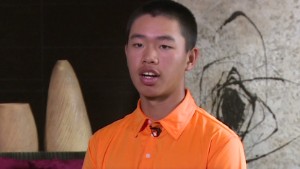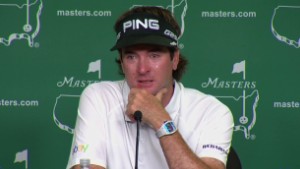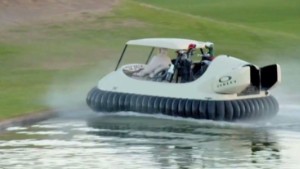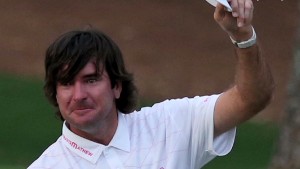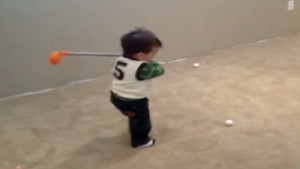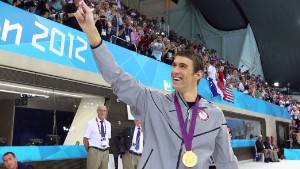Yuko Shimizu, creator of Hello Kitty, in 2010
In 1962, Shintaro Tsuji, founder of Sanrio, began selling rubber sandals with flowers painted on them. Tsuji noted the profits gained by adding a cute design to the sandals and hired cartoonists to design cute characters for his merchandise. The company produced a line of character merchandise around gift-giving occasions. Hello Kitty was designed by Yuko Shimizu and was added to the lineup of early Sanrio characters in 1974. The character's first appearance on an item was a vinyl coin purse in Japan where she was pictured sitting between a bottle of milk and a goldfish bowl. She first appeared in the United States in 1976.
Sanrio decided to make Hello Kitty British because at the time when she was created, foreign countries, in particular Britain, were trendy in Japan. In addition, Sanrio already had a number of characters set in the US and they wanted Hello Kitty to be different. Shimizu got the name Kitty fromLewis Carroll's Through the Looking-Glass, where in a scene early in the book Alice plays with a cat she calls Kitty. Sanrio's motto is "social communication" and Tsuji wanted the brand name of the cat to reflect that. He first considered "Hi Kitty" before settling on "Hello" for the greeting. Spokespeople for Sanrio have said that Hello Kitty does not have a mouth because they want people to "project their feelings onto the character" and "be happy or sad together with Hello Kitty." Another explanation Sanrio has given for her lack of a mouth is that she "speaks from the heart. She's Sanrio's ambassador to the world and isn't bound to any particular language". Representatives for Sanrio have said they see Hello Kitty as a symbol of friendship, and they hope she will encourage friendship between people across the world. There has been some suggestion that Hello Kitty has its origins in Maneki Neko, and that the name Hello Kitty itself is a back-translation of Maneki Neko, which means beckoning cat in English.
History
Hello Kitty sold well immediately after the 1974 launch, and Sanrio's sales increased seven times up until 1978 when they slumped temporarily. New series with Hello Kitty in different themed designs are released regularly, following current trends. Yuko Yamaguchi, the main designer for most of Hello Kitty's history, has said that she is inspired by fashion, movies and TV in creating new designs.
Hello Kitty was originally marketed only to young girls. In the 1990s the target market for Hello Kitty was broadened to include teens and grown ups as a retro brand. Marketed to those who could not get Hello Kitty merchandise as children, or who fondly remembers items they had, Sanrio began selling Hello Kitty branded products like purses and laptops.The 1994-1996Face series was the first to be designed for a more mature appeal.
According to Sanrio, in 1999 Hello Kitty appeared on 12 000 different products yearly. By 2008, Hello Kitty was responsible for half of Sanrio's $1 billion revenue and there were over 50 000 different Hello Kitty branded products in more than 60 countries. Beginning in 2007, following trends in Japan, Sanrio began using darker designs for Hello Kitty with more black and less pink, and pulling away from kawaii styles.
Products
According to Sanrio, in 1999 Hello Kitty appeared on 12 000 different products yearly. By 2008, Hello Kitty was responsible for half of Sanrio's $1 billion revenue and there were over 50 000 different Hello Kitty branded products in more than 60 countries. Beginning in 2007, following trends in Japan, Sanrio began using darker designs for Hello Kitty with more black and less pink, and pulling away from kawaii styles.
Originally aimed at the pre-adolescent female market, the Hello Kitty product range has expanded and goes all the way from dolls, stickers, greeting cards, clothes, accessories, school supplies and stationary to purses, toasters, televisions, other home appliances, massagers, and computer equipment. These products range from mass market items to high-end consumer products and rare collectibles.
Sanrio Shop in Madrid, Spain with the Hello Kitty character outline as the entryway
Sanrio and various corporate partners have released Hello Kitty-branded products, including the Hello Kitty Stratocaster electric guitar (since 2006, withFender in the US) and even an Airbus A330-200 commercial passenger jet airliner, dubbed the Hello Kitty Jet (2005–2009, with EVA Airways in Taiwan).
2009 marked the collaboration between apparel and accessory brand Stussy and Hello Kitty. Stussy worked with Hello Kitty on collection focusing on the Hello Kitty character with Stussy signature graphics. This collection included T-shirts, keychains, and hoodies.
In 2010, Hello Kitty entered the wine market with collection made up of four wines available for purchase online, continuing an expansion of products targeted at older audiences.
Jewelery
In Spring 2005, Simmons Jewelry Co. and Sanrio announced a co-branded jewelery licensed partnership. “Kimora Lee Simmons for Hello Kitty” was launched exclusively at Neiman Marcus prices ranging from $300 to $5000 Designed by Kimora Lee Simmons and launched as the initial collection. The jewelery is all hand-made, consisting of diamonds, gemstones, semi-precious stones, 18K gold, Sterling silver, enamel and ceramic.
In Fall 2008, Simmons Jewelry Co. and Sanrio debuted a collection of fine jewellery and watches named “Hello Kitty® by Simmons Jewelry Co." The collection launched with Zales Corporation to further expand the reach of the brand, and it developed accessories to satisfy every Hello Kitty fan. The designs incorporate colorful gemstones and sterling silver to attract a youthful audience with retail prices starting at $50.
Establishments
Hello Kitty cafe in Hongdae, Seoul
There is a themed restaurant named Hello Kitty Sweets in Taipei, Taiwan. The restaurant's decor and many of its dishes are patterned after the Hello Kitty character.
In 2008, a Hello Kitty-themed maternity hospital opened in Yuanlin, Taiwan. Hello Kitty is featured on the receiving blankets, room decor, bed linens, birth certificate covers, and nurses' uniforms. The hospital's owner explained that he hoped that the theme would help ease the stress of childbirth.
Hello Kitty is included as part of the Sanrio livery at the Japanese theme parks Harmonyland and Sanrio Puroland.
There is also a Hello Kitty Cafe, located on an uphill alley off Eoulmadang-ro, the main shopping thoroughfare in Hongdae, Mapo-gu, Seoul, South Korea.[31]
Media
Anime
There have been several different Hello Kitty TV series. The first animated television series was Hello Kitty's Furry Tale Theater which was 13 episodes long and aired in 1987. The next, Hello Kitty and Friends, came out in 1993 and was also 13 episodes. Hello Kitty's Paradise came out in 2000 and was 16 episodes. Hello Kitty's Stump Village came out in 2005 and The Adventures of Hello Kitty & Friends came out in 2006 has aired 52 episodes.
TV series
"KISS Hello Kitty" is a forthcoming American animated TV series that will premiere on cable channel The Hub. Gene Simmons, bassist of the band KISS, is slated to be an executive producer for the series. No cast or release date has been announced yet.
Music
Hello Kitty has her own branded album, Hello World, featuring Hello Kitty-inspired songs performed by a collection of artists, including Keke Palmer and Cori Yarckin.[33]
Hello Kitty was also chosen by AH-Software to be the basis of the new Vocaloid Nekomura Iroha (猫村いろは Nekomura iroha?) to celebrate the 50th anniversary of Sanrio.
Video games
Numerous Hello Kitty games have been produced since the release of the first title for NES in 1992; however, the majority of these games were never released outside of Japan. Hello Kitty also has made cameo appearances in games featuring other Sanrio characters, such as the Keroppi game, Kero Kero Keroppi no Bōken Nikki: Nemureru Mori no Keroleen. Special edition consoles such as the Hello Kitty Dreamcast, Hello Kitty Game Boy Pocket, and Hello Kitty Crystal Xbox have also been released exclusively in Japan.
Partial list of Hello Kitty video games
- Hello Kitty no Hanabatake (1992, NES): a platformer
- Hello Kitty World (1992, Famicom): a Famicom port of Balloon Kid co-developed by Nintendo and Character Soft.
- Hello Kitty's Big Fun Piano (1994, PC): a piano simulation[36]
- Hello Kitty's Cube Frenzy (1998, Game Boy Color): a life simulation/minigame collection
- DDR Hello Kitty (1999, Bemani Pocket): a handheld Hello Kitty game in the Dance Dance Revolution series
- The Hello Kitty Simple 1500 series (PlayStation): a series of specifically low-priced games
- Gotouchi Hello Kitty Sugoroku Monogatari (2003, PlayStation): a sugoroku-based game
- Hello Kitty: Happy Party Pals (2005, Game Boy Advance): an action/adventure game
- Hello Kitty: Roller Rescue (2005, Xbox, GameCube, PlayStation 2): an action/adventure game
- Mainichi Suteki! Hello Kitty no Life Kit (2007, Nintendo DS): a puzzle game
- The Hello Kitty Simple 2000 series (2007, PlayStation 2): a series of specifically low-priced games
- Hello Kitty: Big City Dreams (2008, Nintendo DS): an adventure game published by Empire Interactive developed by Sanrio Digital. In the game, Hello Kitty moves to the Big City where she meets other Sanrio characters and makes new friends.[37]
- Hello Kitty Daily (2008, Nintendo DS): a PDA application featuring a diary, calendar, alarm clock, money managing system and school planner
- Hello Kitty Online (2009, PC): an online MMORPG developed by Sanrio Digital and Typhoon Games. The game allows players to create and customize characters, then use them to battle monsters, socialize with one another, mine for ore, do domestic chores like farming or cooking, and participate in quests.
- Hello Kitty Seasons: A game in which the playable character is appointed as Deputy Mayor to help Sanrio Town.
- Hello Kitty Parachute Paradise (2009, iPhone/iPod Touch): an iPhone game with tilt-based controls[38]
- Apron of Magic (2010, Arcade): An Arcade Card Game developed by Examu to commemorate the 50th Anniversary of Sanrio. The game features Hello Kitty and other notable Sanrio Characters.
Reception
The Hello Kitty brand rose to greater prominence during the late 1990s. At that time, several celebrities, such as Mariah Carey, had adopted Hello Kitty as a fashion statement. Newer products featuring the character can be found in a large variety of American department stores.
The Dutch artist Dick Bruna, creator of Miffy, has suggested that Hello Kitty is a copy of Miffy (in Dutch: Nijntje), being rendered in a similar style, stating disapprovingly in an interview for the British paper The Daily Telegraph:
- 'That,' he says darkly, 'is a copy [of Miffy], I think. I don't like that at all. I always think, "No, don't do that. Try to make something that you think of yourself".
Musti, a cat character created by Belgian cartoonist Ray Goossens, was also cited as an inspiration for both Miffy and Hello Kitty.
In May 2008, Japan named Hello Kitty the ambassador of Japanese tourism in both China and Hong Kong, which are two places where the character is exceptionally popular among children and young women. This marked the first time Japan's tourism ministry had appointed a fictional character to the role. Dr Sharon Kinsella, a lecturer at Oxford University on Japanese sociology, called the selection of Hello Kitty "a bit farcical;" "as if a dumbed-down cultural icon ... can somehow do something significant to alter the gnarly and difficult state of China-Japan relations."
UNICEF has also awarded Hello Kitty the exclusive title of UNICEF Special Friend of Children.
Hello Kitty's popularity began waning in Japan before the year 2000. In 2002, Hello Kitty lost her place as the top-grossing character in Japan in the Character Databank popularity chart and has never recovered. In a 2010 survey, she was in third place behind Anpanman and Pikachu from Pokémon. In 2010, the New York Times described Hello Kitty's characterization as "not compelling enough to draw many fans" and wrote that analysts called the characterization "weak." They also said that Hello Kitty not having a mouth has dampened her success as an animated TV character.
Legacy
In 1999, a brutal murder known as the Hello Kitty murder took place in Hong Kong. The popular name of the case derives from the fact that the murderer inserted his victim's head into a Hello Kitty doll after decapitating her.
As of August 2007, Thai police officers who have committed minor transgressions such as showing up late or parking in the wrong place are forced to wear pink Hello Kitty armbands for several days as penance.
During the financial crisis of 2007–2010, a poster of a Hello Kitty pre-paid debit card expanded to roughly 1 meter in length was displayed on the floor of the US Senate by Senator Byron Dorganas a demonstration of extreme methods used by credit companies to attract "children 10 to 14 years of age". It was criticized for its promotional website encouraging users to "shop 'til you drop."
For more Hello Kitty information and products check out Sarnio at
www.sanrio.com/













 Guan Tianlang, now 14, qualified for this week's Masters when -- as the youngest player in the field, then rated 490th in the world amateur rankings -- he beat a host of senior golfers to win the Asia-Pacific Amateur Championship in Thailand.
Guan Tianlang, now 14, qualified for this week's Masters when -- as the youngest player in the field, then rated 490th in the world amateur rankings -- he beat a host of senior golfers to win the Asia-Pacific Amateur Championship in Thailand.